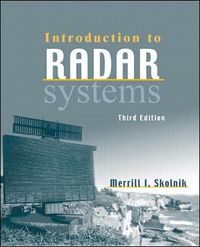
Introduction to Radar Systems (Int'l Ed) Upplaga 3
Since the publication of the second edition of "Introduction to Radar Systems," there has been continual development of new radar capabilities and continual improvements to the technology and practice of radar. This growth has necessitated the addition and updating of the following topics for the third edition: digital technology, automatic detection and tracking, doppler technology, airborne radar, and target recognition. The topic coverage is one of the great strengths of the text. In addition to a thorough revision of topics, and deletion of obsolete material, the author has added end-of-chapter problems to enhance the "teachability" of this classic book in the classroom, as well as for self-study for practicing engineers.
Upplaga: 3e upplagan
Utgiven: 2000
ISBN: 9780071181891
Förlag: McGraw-Hill Education
Format: Häftad
Språk: Engelska
Sidor: 672 st
Since the publication of the second edition of "Introduction to Radar Systems," there has been continual development of new radar capabilities and continual improvements to the technology and practice of radar. This growth has necessitated the addition and updating of the following topics for the third edition: digital technology, automatic detection and tracking, doppler technology, airborne radar, and target recognition. The topic coverage is one of the great strengths of the text. In addition to a thorough revision of topics, and deletion of obsolete material, the author has added end-of-chapter problems to enhance the "teachability" of this classic book in the classroom, as well as for self-study for practicing engineers.
Begagnad bok (0 st)
Varje vecka tillkommer tusentals nya säljare. Bevaka boken så får du meddelande när den finns tillgänglig igen.



